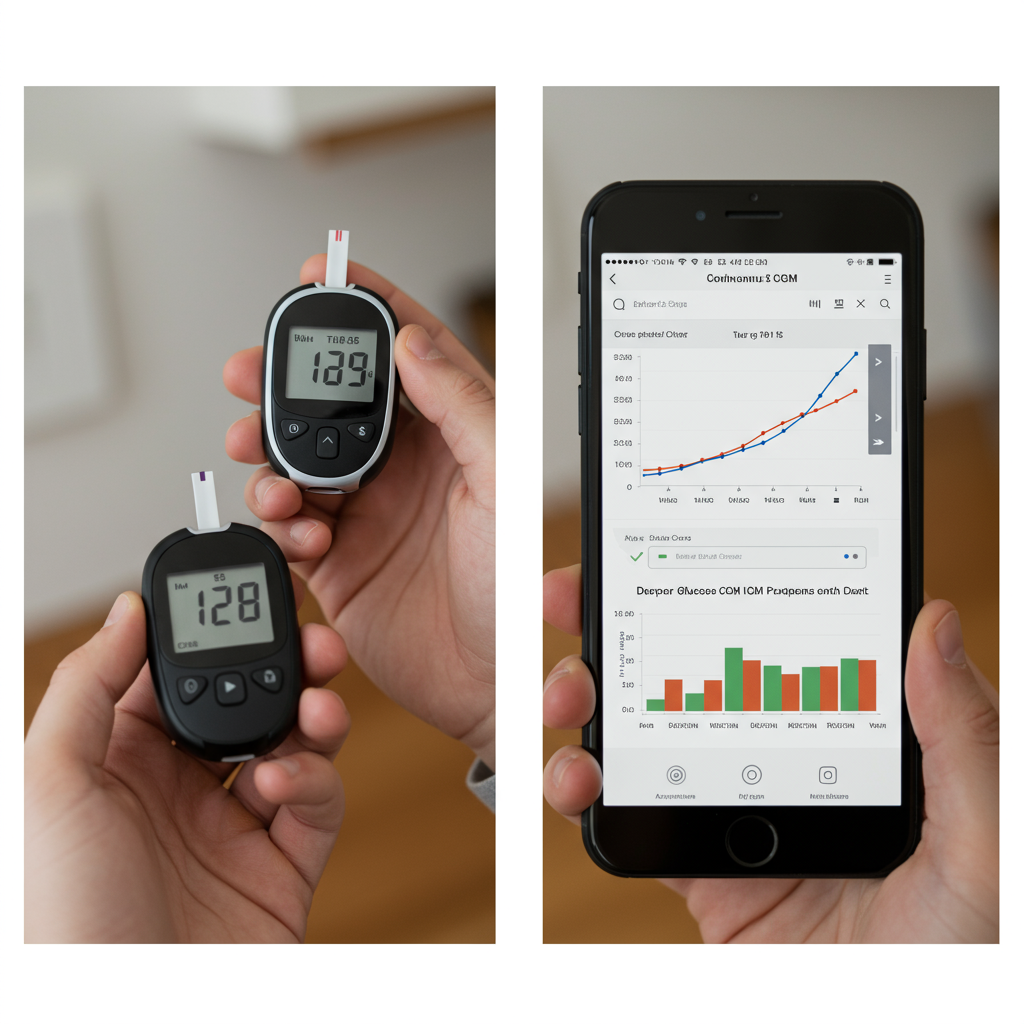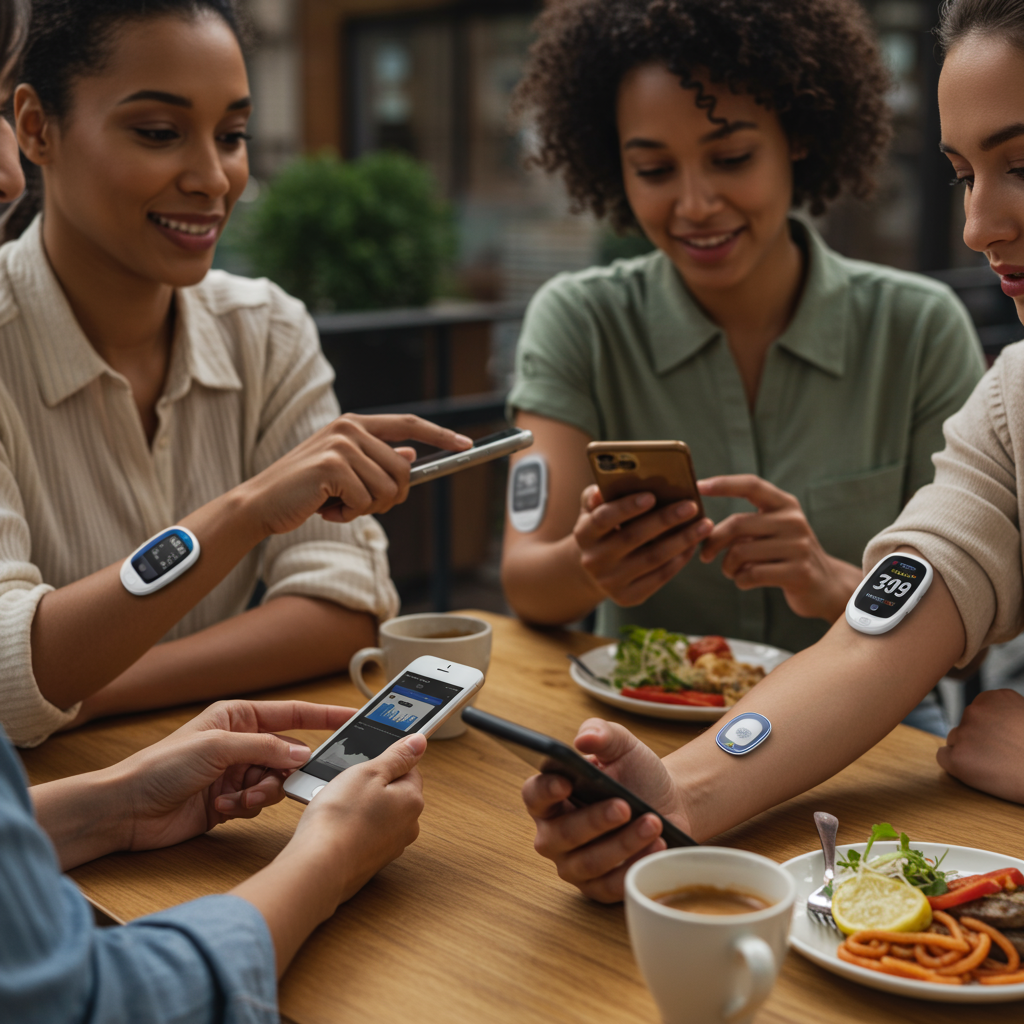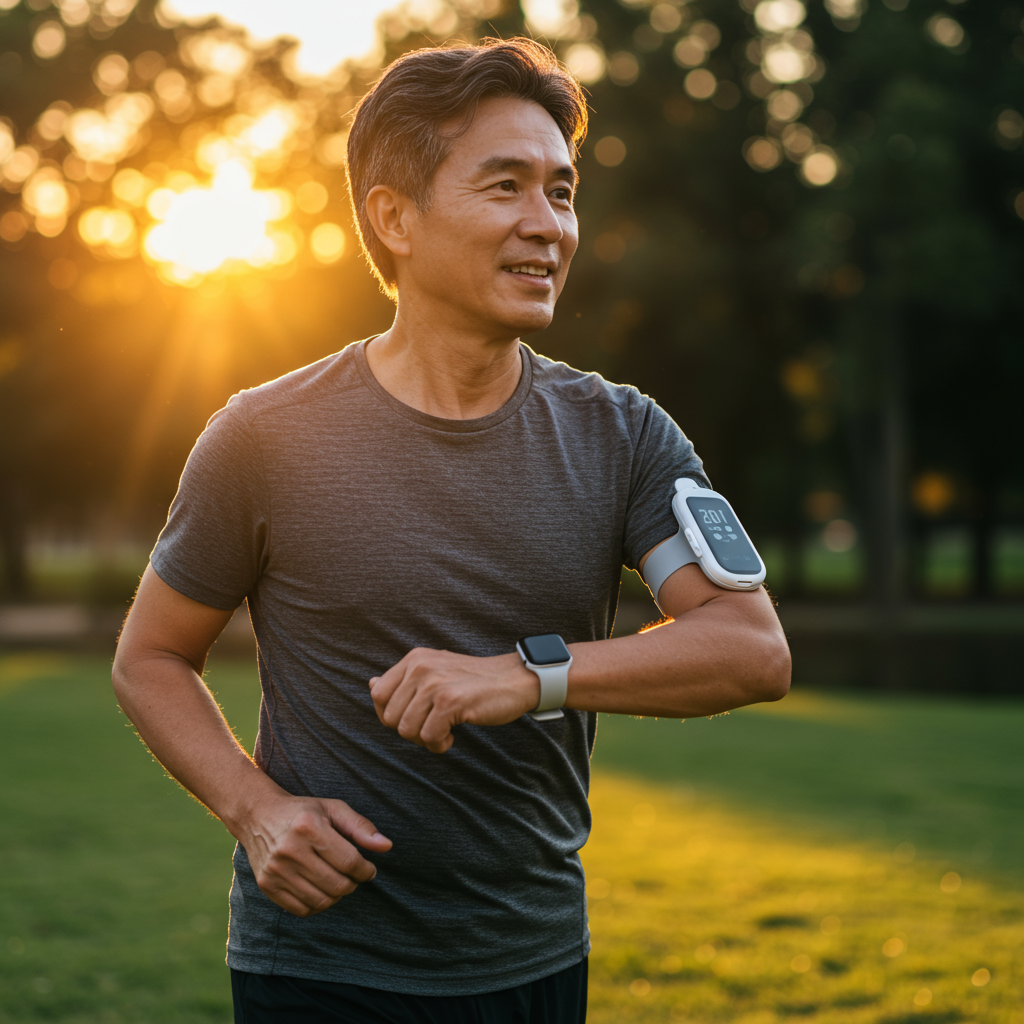Beyond the Prick: Why CGM Technology Is Revolutionizing Diabetes Management
For decades, the fingerstick blood glucose meter has been the cornerstone of diabetes management—a ritual that millions perform multiple times daily. But in recent years, continuous glucose monitors (CGMs) have emerged as game-changers in diabetes care. As someone deeply invested in optimizing metabolic health, I've followed this evolution closely and believe it represents one of the most significant advances in diabetes management of the past 50 years. Let's dive into what truly differentiates these technologies and why it matters so profoundly.
The Fundamental Difference: Snapshots vs. The Full Movie
The most obvious distinction between fingerstick monitoring and CGM is frequency, but this understates the profound difference between these approaches.
Fingerstick monitoring provides what I call "glucose snapshots"—isolated data points that tell you your blood glucose concentration at specific moments. It's like trying to understand a movie by looking at 4-6 random screenshots. You might catch some dramatic scenes, but you'll miss crucial plot developments and transitions.
In contrast, CGM systems measure glucose levels continuously, typically every 5 minutes, delivering 288 readings daily. This provides the complete "glucose movie"—revealing the peaks, valleys, rate of change, and patterns that would otherwise remain invisible. This continuous data stream unveils the dynamic relationship between your glucose levels and various inputs like food, exercise, stress, and sleep.
As one patient memorably told me: "Fingersticks tell me where I am; CGM shows me where I've been and where I'm heading."

Technical Realities: Blood vs. Interstitial Fluid
Beyond frequency, there's an important physiological distinction. Traditional meters measure glucose directly in the blood (typically from capillaries in your fingertips), while most CGMs measure glucose in the interstitial fluid—the fluid surrounding your cells.
This creates two important differences:
-
Time lag: Interstitial glucose readings lag behind blood glucose by about 5-15 minutes. This means CGM readings reflect recent rather than instantaneous changes in blood glucose.
-
Accuracy considerations: The correlation between blood and interstitial glucose can vary depending on how rapidly your glucose levels are changing. During periods of stability, CGM accuracy closely approaches fingerstick readings, but during rapid rises or falls, the disparity can increase.
Modern CGMs have significantly improved this accuracy gap. Current devices typically achieve a mean absolute relative difference (MARD) of 9-12% compared to laboratory measurements—a vast improvement from earlier generations. While fingerstick measurements still hold a slight edge in point accuracy (typically 5-10% MARD), this difference is diminishing with each technological iteration.
The Clinical Impact: Moving Beyond HbA1c
The profound clinical advantage of CGM lies in its ability to reveal what I consider the most important metrics in glucose management: time in range and glycemic variability.
HbA1c, long considered the gold standard for diabetes management, provides only an average glucose estimate over 2-3 months. This can mask dangerous hypoglycemic events and extreme glucose swings. Two patients with identical HbA1c values can have radically different glucose profiles and health outcomes.

CGM data allows us to track:
- Time in range: The percentage of time spent within target glucose levels
- Glycemic variability: The magnitude and frequency of glucose swings
- Hypoglycemic exposure: Duration and severity of low glucose events
- Glucose patterns: Recurring trends tied to specific behaviors or times
These metrics provide a substantially more nuanced and actionable view of metabolic health than either HbA1c or isolated fingerstick readings. Research increasingly shows that glycemic variability may be an independent risk factor for diabetes complications, possibly through increased oxidative stress and vascular damage.
Psychological and Behavioral Transformation
Perhaps the most underappreciated difference between these technologies is their psychological impact. When patients transition to CGM, they often describe a fundamental shift in their relationship with diabetes management.
Fingerstick monitoring is reactive—you check your glucose after symptoms appear or at predetermined intervals. This creates a management approach that's inherently backward-looking.
CGM enables proactive management—you can watch glucose trends developing and intervene before they become problematic. The arrows indicating direction and rate of change transform how patients make decisions about insulin dosing, eating, and exercise.
The continuous feedback loop creates what behavioral scientists call a "tight coupling" between actions and consequences. When you can immediately see how a particular food affects your glucose levels, it fundamentally changes your relationship with nutrition. This real-time biofeedback accelerates learning and often leads to more sustainable behavior change than periodic fingerstick readings.
For many people with diabetes, this shift from reactive to proactive management represents liberation from the constant anxiety of unexpected highs and lows—a psychological benefit that's difficult to quantify but impossible to ignore.

While fingerstick monitoring remains valuable for calibration and confirmation of questionable readings, the transition to continuous glucose monitoring represents a quantum leap in diabetes care. The difference isn't merely technological—it's transformative, offering a fundamentally different approach to understanding and managing glucose metabolism.
References
Battelino T, Danne T, Bergenstal RM, et al. Clinical Targets for Continuous Glucose Monitoring Data Interpretation: Recommendations From the International Consensus on Time in Range. Diabetes Care. 2019;42(8):1593-1603.
Beck RW, Bergenstal RM, Riddlesworth TD, et al. Validation of Time in Range as an Outcome Measure for Diabetes Clinical Trials. Diabetes Care. 2019;42(3):400-405.






